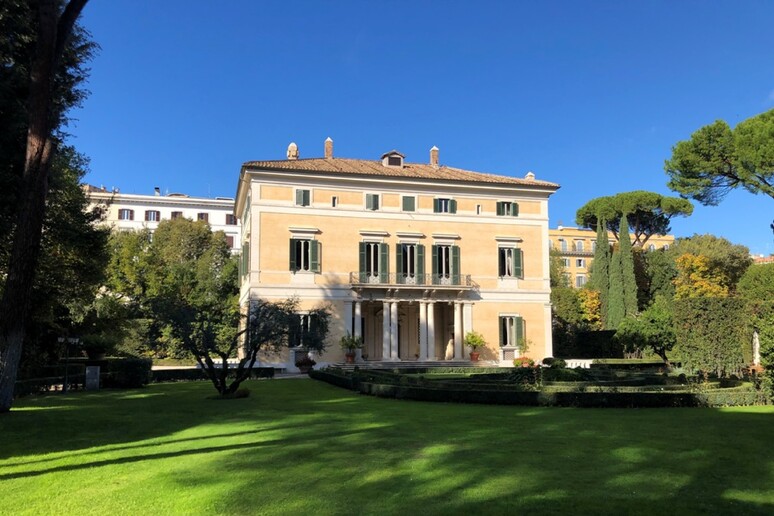(by Ida Bini)
(ANSAmed) - ROME, 15 DIC - One of the most breath-taking
locations in Rome is opening to the public: as of January 3,
Villa Bonaparte, France's embassy to the Holy See, will open its
doors to Romans and tourists who want to admire its rooms and
gardens and discover the history, culture and beauty of this
piece of France in the Italian capital.
"Opening the embassy to citizens is a politically important
gesture - commented Ambassador Florence Mangin - which unites
and allows everybody to discover a place of culture, art and
history of great relevance".
Restored in 2018, the sumptuous villa has a portico with six
Doric columns overlooking the fruit plants of the beautiful
gardens, where much work has been carried out over the past few
years. The villa's features include a large and fascinating room
on the first floor, adorned with stuccos and paintings with a
mythological theme; the Egyptian room, decorated in honour of
Napoleon's military campaigns; the chapel with stuccos from the
1700s; the dining room, displaying 17th century French paintings
from the Louvre museum, and the loggia with a 1700s floor and
characterized by a ceiling decorated as a luxurious garden
similar to the one surrounding Villa Paolina, known as
Bonaparte.
It is a splendid residence, built in 1750 inside the Aurelian
Walls, between Porta Pia and Porta Salaria, at the request of
Mantua Cardinal Silvio Valenti Gonzaga, secretary of State to
pope Benedict XIV. At the time, it was one of the most refined
countryside homes, with art masterpieces and guests including
leading artists, scientists and intellectuals, as can be
understood by a famous painting by Gian Paolo Pannini from 1749,
Gallery of cardinal Valenti Gonzaga, where among the many
paintings and objects of art is also represented a group of
people as they are looking at the architectural project of a
building. When the cardinal died, the villa was bought first by
the family Sciarra Colonna and subsequently, in 1816, by Paolina
Bonaparte, sister of Napoleon and bride of prince Camillo
Borghese. Major renovation work was carried out at Paolina's
request, as well as a renewal of the interior decoration
according to the Imperial style, which can still be admired
today.
Inside, the atmosphere is still as cultured and refined as
Napoleon's sister wanted it as she loved surrounding herself
with the most popular artists. During a trip to Rome in 1820,
Irish writer Lady Syndey Morgan was particularly struck by it
and wrote: "Of all the villas owned by the Borghese family, only
one offers English fascination, French elegance and Italian
taste combined in the happiest manner: Villa Paolina Bonaparte".
When Paolina died in1825, the villa was inherited by family but
in 1870 it was severely damaged following the takeover of Rome:
when on September 20 the troops of the Kingdom of Italy opened
the "breach of Porta Pia", they entered through the gardens of
Villa Bonaparte. The building remained in the hands of the
descendants of Paolina Borghese until 1906, when it was sold to
the Prussian government which in 1908 housed there its
delegation to the Holy See. It later became the German embassy
between 1920 and 1944, and in 1945 France bought it and
established there its embassy to the Holy See in 1950.
Guided tours are available in Italian and French each Tuesday
and Thursday, from 10:30 until 11:30. (ANSAmed).
ALL RIGHTS RESERVED © Copyright ANSA











